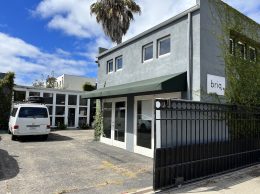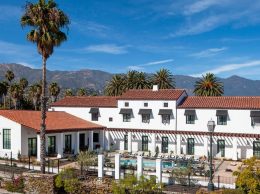Our view: Consistent rules critical for successful reopening
IN THIS ARTICLE
- Editorials Topic
- Henry Dubroff Author
By Henry Dubroff Friday, May 29th, 2020
An exemption that allows for the re-opening of Santa Barbara County’s tasting rooms underscores one essential concept: for the region’s economic recovery to be successful, it must be truly regional.
A consistent set of rules across the tri-county region will bring about a methodical reopening — a hodge-podge of rules will create chaos and create situations where people hungry for activities will swarm one particular area and cause additional risk of coronavirus spread.
That is the subtext for action by County CEO Mona Miyasato, who invoked emergency rules to temporarily suspend restrictions that prohibit or limit wineries and wine tasting rooms from serving food. As Business Times wine columnist Tom Bronzini wrote, the emergency rule extends a program that allows businesses in unincorporated areas to utilize public right-of-way areas in order to achieve social distancing. Wineries must submit a permit application, a site plan and certificate of insurance to qualify.
This follows moves by the city of Santa Barbara to close State Street to vehicular traffic and maybe the Funk Zone will be the next place to allow for more restaurant and tasting room seating. The city of Ventura and potions of SLO County are also weighing various ways to relax the rules and allow more access for tourists and residents.
The Santa Barbara County rules also allow tasting rooms to team up with caterers and bring in food — a double benefit for hard hit industries. And they are likely to be more than “temporary” as they extend to December, which effectively means the entire 2020 tourism season. It is easy to imagine an extension into 2021.
Santa Barbara County should consider itself lucky or perhaps the beneficiary of some rare but welcome smart thinking in Sacramento. It received a variance to move into Stage 2 after state bureaucrats said it could exempt COVID-19 cases at the federally-controlled prison in Lompoc.
That decision allowed Santa Barbara, SLO and Ventura counties to move simultaneously to Stage 2.
Alison Laslett, CEO of the Santa Barbara Vintners, told the Business Times that coordinated rulemaking at the county and city level is the key to successful reopening.
“Everybody wants to have enough room for people to be safe and everybody wants to offer the opportunity for them to eat and have wine. Each area will achieve that slightly differently but that’s the goal,” she said.
MEDICAL MILESTONES
One of the things we’ve notice about health care on the Central Coast is the durability of many of our institutions. So, in the middle of the first global pandemic in a century, we’re happy to recognize two significant milestones.
Marian Regional Medical Center in Santa Maria is celebrating its 80th anniversary at the leading edge of care on the Central Coast. Founded in 1940 by the Sisters of Saint Francis, it now operates a 191-bed hospital, a network of clinics and a highly regarded cancer center. Marian has played a key role in treating COVID-19 patients on the Central Coast.
Seventy-five years ago, in 1944, Dr. William Sansum set up the Sansum Diabetes Research Center in Santa Barbara to explore ways to advance his pioneering insulin treatments. In the 1980s, SDRC research showed that women with diabetes can have successful pregnancies and it is now researching diabetes among a large group of Latino families.
These are important institutions. Congratulations.












